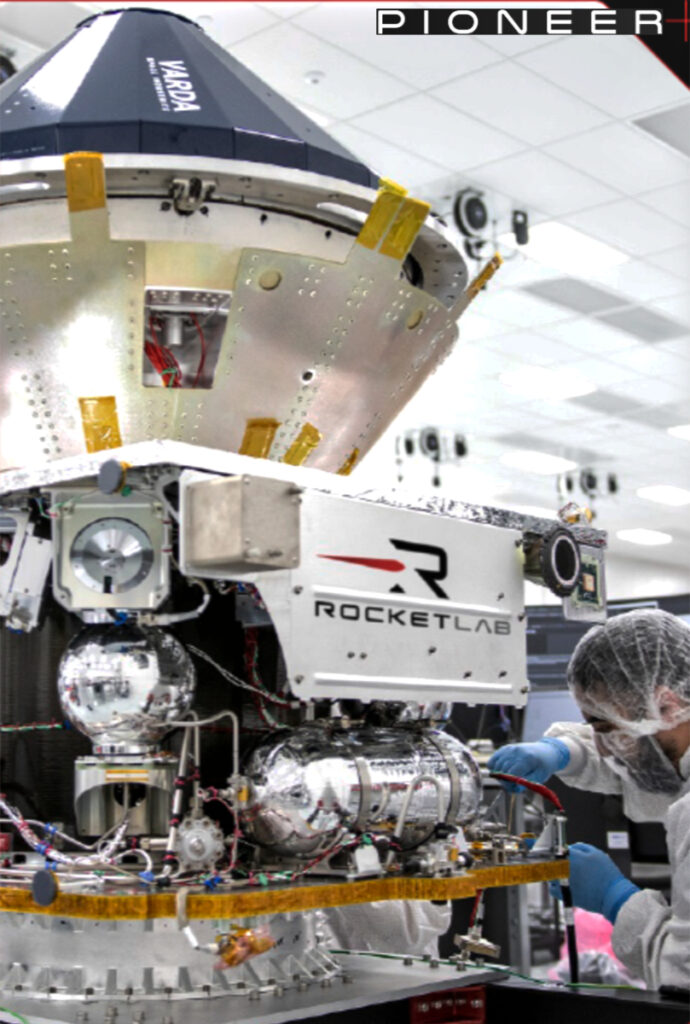
Rocket Lab USA, Inc. (Nasdaq: RKLB) has announced its second Pioneer spacecraft for Varda Space Industries, Inc. is successfully operating on orbit — the mission launched on January 14, from Vandenberg Space Force Base.

Varda’s W-2 mission includes a Rocket Lab Pioneer spacecraft and a Varda a re-entry capsule carrying a spectrometer from the Air Force Research Laboratory (AFRL). The capsule employs a heatshield with a Thermal Protection System (TPS) developed in collaboration with NASA’s Ames Research Center in California’s Silicon Valley.
These payloads are in addition to Varda’s expanded pharmaceutical reactor which will expand capability and capacity for pharmaceutical processing. The W-2 mission follows on from Rocket Lab’s first mission for Varda, which operated on-orbit for eight months before returning to Earth in early 2024 in a successful demonstration of the world’s first orbital manufacturing mission conducted outside of the International Space Station.

Like the first Pioneer spacecraft for Varda, the W-2 Pioneer is delivering critical mission functions for Varda’s 120 kg capsule including power, communications, propulsion, and attitude control.
Following the payload processing phase on-orbit, Rocket Lab’s spacecraft will guide and position Varda’s capsule for deorbit, enabling a hypersonic re-entry and recovery at the Koonibba Test Range in South Australia, operated by Southern Launch.
The Pioneer spacecraft was designed, built, and tested at Rocket Lab’s Spacecraft Production Complex and headquarters in Long Beach, California. It integrates Rocket Lab’s vertically developed components and systems, including star trackers, propulsion systems, reaction wheels, solar panels, flight software, radios, composite structures, tanks, separation systems, and more.
The W-2 mission is the second of four spacecraft ordered by Varda to support orbital processing, with the third spacecraft complete and awaiting shipment for launch.
“Another Rocket Lab spacecraft is in orbit, performing well, and supporting innovative new space capabilities for our mission partners Varda Space Industries,” said Rocket Lab founder and CEO, Sir Peter Beck. “We’ve built a deep expertise in guidance, navigation, and control, allowing us to precisely manage spacecraft operations in some of the most demanding environments, ensuring that our customers, like Varda, can rely on us to safely and accurately deliver their mission goals, from on orbit operations to capsule re-entry.”
“Varda and its partners are building a foundation layer for the orbital economy. The W-2 mission is in service of this goal,” said Varda CEO and co-founder, Will Bruey. “We are looking forward to many more successful missions, and a world where products made in orbit are seen as common place.
